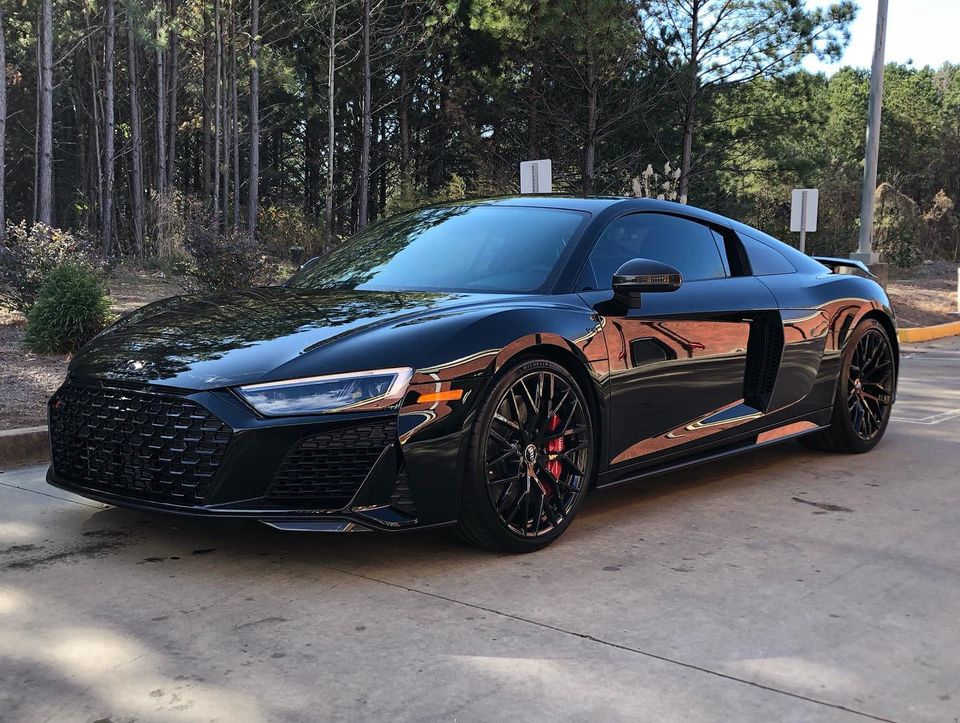

However, if you want a low tint (5), then there would be some exceptions.

Tint percentages windows#
But keep in mind that it is not allowed to tint your windows 5, as this is against the law. It is important to note that the UK law states that a tint of higher than 70% CANNOT legally be used on the front windows of the car, but on the rear windows only.įor more information and to see how the different shades of tint would look on your car, you can visit our Car Window Tint Simulator. So far, we have so many types of window tints, and the percentages can range from 10 to 90. For example, if you wanted more security for the back of your car, you might pick a darker tint such as 5% for the rear window. When thinking about which percentage of tint would be best for your needs, it is useful to consider what it is you want  the film for. The different options of window tinting film available are: A high percentage of 70% means that a large proportion of light can get through the film, while a low percentage of 5% means that only a small amount of light can pass through, and so the tint is much darker and is more difficult to see through. What do the different percentages of tint mean?īasically, the percentage refers to the percentage of light that is able to pass through the film. Check out our Window Tinting Videos & Guides to achieve the best results with your pre-cut car window tinting kit. Some sort of squeegee or other tool is extremely useful when applying the film, as it helps it to go on smoothly and to eliminate any bubbles that might appear during the process. In simple terms, window tint is a self adhesive film with a clear backing that is peeled away as you apply the film to the car windows.
Tint percentages full#
Full 30m Window Tint Rolls - From WT Window Films (new window).Most are delivered with around a 90 percent tint, and - to ensure legal compliance - this must be factored into the calculation when adding more tints. This serves the tandem purposes of minimizing road glare and slowing the rate at which a vehicle interior heats up in direct sunlight. Most cars are manufactured with a certain amount of tint already in their windows. Side window regulations may be relaxed for limousines and medical transport. Typically the laws allow for the rear screen to be tinted as dark as the owner wishes but limit the percentages on side windows and the amount of the windshield that can be tinted, usually measured downward from the top. Purported to be a safety precaution, the restrictions also make it easier for law enforcement officers to monitor activities inside vehicles. There is no federally mandated regulation governing tint, but many states have placed legal restrictions on the maximum allowable percentages for road-use vehicles. As noted, 5 percent is considered a limo tint 20 percent is considered dark 35 percent is considered medium 50 percent is considered a light tint. While not mandated by any regulatory authority, a sliding scale of tint percentages is accepted by the automotive industry. A 60 percent VLT tint blocks 40 percent of visible light transmission a 20 percent VLT blocks 80 percent of visible light transmission. A tint of 50 is one of the more common choices our team tends to see, as this option will block half of the light that enters. As discussed above, this spectrum ranges from allowing more light into your car to allowing less light. The apparent misnomer makes marginally more sense when referred to by its proper name, visible light transmission, or VLT. Most major window film manufacturers will offer a range of tints in a few standard VLTs: 50, 35, 20, and 5. “Limo tint,” for all practicable purposes the darkest on the market, is a 5-percent tint, allowing only 5 percent of exterior light levels to enter the vehicle. This tint falls within that range for a vast. This is a safe range for factory tinting because many states place restrictions on the level of tint vehicles can have. This level of tint is usually in the 15-20 range. Sometimes manufacturers apply a tint at the factory. For all its faults, this graduation is universally accepted. This is commonly what is referred to as 'factory tint'. Confusingly, this scale results in a 100-percent tinted window having no tint at all it lets in 100 percent of the external light. Window tints percentages are described with the lower numbers representing the darkest tints. The measurement is described in percentages.
Tint percentages plus#
Even clear glass blocks some light transmission, so a calibration of retrofitted tints must measure the resistance of the glass plus the film. Integral tint is installed as a component of the glass during manufacture retro-fitted tint is applied to the glass as a film after manufacture. Limousines use the darkest window tints allowed on the roads.Ĭar window tint is a method, either integral or retro-fitted, of blocking light from outside the vehicle to its interior.


 0 kommentar(er)
0 kommentar(er)
